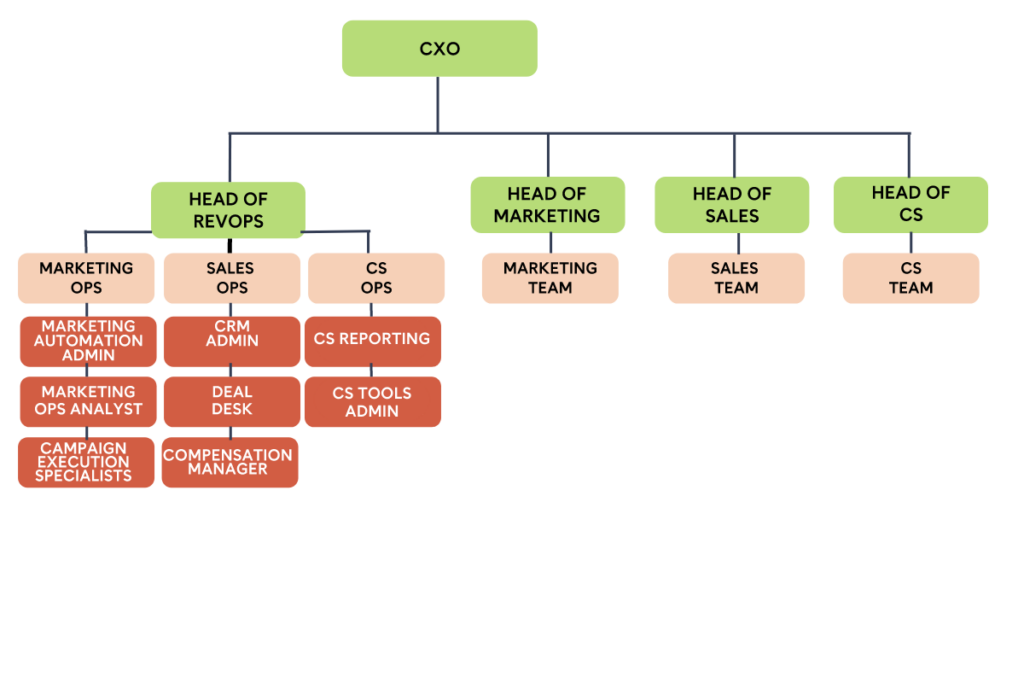Types of RevOps Org Charts
Ah, the RevOps org chart. Where to begin?
Historical fun fact: The modern org chart was originally inspired by the dynasties of the Industrial Age and their need to eliminate the chaos that resulted from such rapid growth. Nowadays, some prefer to do without it, opting instead for a flat organizational model. Still, many companies do continue to utilize an org chart, particularly when implementing changes that impact multiple functions. Here, we’ll dive into how we’re seeing modern companies organize their teams.
But first, Authority
Often, one of the first things we think about when considering the function of an org chart is authority, which we define as the power to make decisions, the power to take action, and the power to compel others to take action.
But the concept of authority goes far beyond the hierarchy element of an org chart; as a key area in the RevOps system framework, the way we give out authority in an organization directly impacts how decisions are made for the business and how change is enacted.
To ensure the decisions being made are the right ones to drive our business goals forward, there needs to be a clear, well-communicated North Star that guides us. Once you have defined your North Star, you can start to address ownership and how best to share power while also mitigating risk to the organization.
The Departmental Breakdown
This org chart model breaks the organization down by go-to-market department. Under the Head of RevOps, you have all your GTM ops teams. This model is most common in early stage companies who may just be getting started with RevOps.

Benefits: Increased efficiency and adaptability.
Risks: Can cause people & information silos.
The Functional Breakdown
With this type of org chart, RevOps is broken down by function. These functions correspond with the 4 core skills of revenue operations: strategy, tools, enablement, and insights. This model is often seen in mid-stage companies that have begun to flesh out their RevOps function.
Benefits: Flexibility, increased communication and collaboration, multi-faceted decision making
Risks: The complexity of this model can cause confusion around authority and decision-making.
Plot Twist: Org Charts are Dead
Bet we’ve got your attention now. What we really mean by this is that the things companies have traditionally focused on when creating org charts (hierarchy, job title, etc.) are more or less irrelevant when it comes to RevOps. So, what is the important stuff?
- The actual function of each role and how they relate to one another. Names change quickly, but roles do not. Have a separate directory you can link to that has names and titles. Bonus points if it also shows all the roles an individual has held.
- How each employee supports the business’ operations.
- Defined performance metrics for each function.
- Ownership and accountability. Map out core processes on the horizontal axis and indicate who is accountable for and involved in each process. The goal is to recognize that some processes cut across the functional division of the company and someone needs to be responsible for aligning and coordinating activities to ensure those processes are successful.
A model that follows these guidelines might have multiple teams answering to one person and taking on projects based on their importance and what the team is capable of, rather than what the team is traditionally designed to do. While this might take some getting used to, it will increase flexibility across teams and help get work done more efficiently.